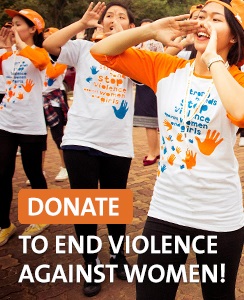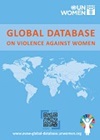Global norms and standards: Ending violence against women
A number of internationally agreed norms and standards relate to ending violence against women. This page lists some of the most prominent. For more details, see UN Women’s Virtual Knowledge Centre to End Violence against Women and Girls.
The 1979 Convention on the Elimination of all Forms of Discrimination against Women (CEDAW) does not explicitly mention violence against women and girls, but General Recommendations 12 and 19 clarify that the Convention includes violence against women and makes detailed recommendations to States parties.
The 1993 World Conference on Human Rights recognized violence against women as a human rights violation and called for the appointment of a Special Rapporteur on violence against women in the Vienna Declaration and Programme of Action. It contributed to the 1993 Declaration on the Elimination of Violence against Women.
The 1993 Declaration on the Elimination of Violence against Women became the first international instrument explicitly addressing violence against women, providing a framework for national and international action. It defines violence against women as any act of gender-based violence that results in, or is likely to result in, physical, sexual or psychological harm or suffering to women, including threats of such acts, coercion or arbitrary deprivation of liberty, whether occurring in public or in private life.
The 1994 International Conference on Population and Development drew links between violence against women and reproductive health and rights. Its Programme of Action calls on Governments to take legal and policy measures to respond to and prevent violence against women and girls.
The 1995 Beijing Platform for Action identifies specific actions for Governments to take to prevent and respond to violence against women and girls. Ending violence is one of 12 areas for priority action. The platform includes an expansive definition of forms of violence.
In 2006 the Secretary-General’s In-Depth Study on All Forms of Violence against Women was released, the first comprehensive report on the issue.
The 2011 Council of Europe Convention on preventing and combating violence against women and domestic violence became the second legally binding regional instrument on violence against women and girls but, unlike other regional agreements, it can be signed and ratified by any State.
The UN General Assembly adopts bi-annual resolutions on the issue of violence against women. The most recent resolutions adopted in 2012 include the intensification of efforts to eliminate all forms of violence against women and trafficking in women and girls.
The UN Human Rights Council adopts annual resolutions on accelerating efforts to eliminate all forms of violence against women, the most recent being in 2012.
In 2013, the Commission on the Status of Women (CSW) adopted, by consensus, Agreed Conclusions on the elimination and prevention of all forms of violence against women and girls. This represents a historic outcome as there had been no agreed conclusions on this issue when it was last considered by CSW in 2003.
For a comprehensive overview of the norms and standards and other intergovernmental work on violence against women, please click here.


